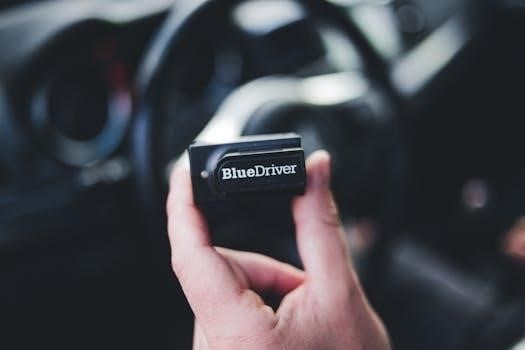
-
By:
- ophelia
- No comment
driver manual nj pdf
New Jersey Driver Manual (NJ MVC Handbook)⁚ An Overview
The New Jersey Driver Manual, often called the NJ MVC handbook, is an essential resource for all drivers. It covers licensing procedures, traffic laws, and safe driving practices. This manual is designed to help prepare for the knowledge test required to obtain a New Jersey driver’s license.

Accessing the NJ Driver Manual PDF
The New Jersey Driver Manual PDF is readily accessible online. You can find and download the latest version of the manual at no cost from the official New Jersey Motor Vehicle Commission (MVC) website, ensuring easy access to essential driving information.
Official NJ MVC Website
The most reliable source for the New Jersey Driver Manual PDF is the official New Jersey Motor Vehicle Commission (MVC) website, www.njmvc.gov. This ensures you obtain the most current and accurate version of the handbook. The MVC website offers the manual for free download, eliminating any costs.
Navigating to the Driver Manual section on the MVC site provides direct access to the PDF file. This allows you to immediately view the manual online or download it for offline use. Downloading the PDF is useful for studying without needing a constant internet connection.
Always verify that you are using the latest edition. The website provides any updates or revisions (e.g., REV 2024). Using the official site ensures you are prepared for your driving exams with the latest regulations and information.

Content of the NJ Driver Manual
The NJ Driver Manual contains key information for safe driving. This includes driver licensing, road rules, safe practices, and traffic signs. It prepares drivers for the knowledge test and promotes safer roads.
Driver Licensing Procedures
New Jersey requires motorists to carry a valid driver’s license, probationary license, or permit, along with insurance and vehicle registration. The Driver Manual details requirements, examinations, and restrictions. A validated permit requires accompaniment by a licensed driver. The manual outlines steps for obtaining a license, including ID verification, vision and knowledge tests.
It guides applicants through temporary, renewal, or duplicate licenses, especially for those out-of-state or country. New Jersey uses a Graduated Driver Licensing (GDL) program, enhancing driver preparation. The manual explains GDL stages, restrictions for young drivers, and upgrading licenses.
The manual helps to understand necessary documents, age requirements, and testing procedures. It includes detailed information on obtaining permits, taking required tests, and eventually upgrading to a full, unrestricted license. Refreshing knowledge of these procedures is crucial, even for existing drivers.
Road Rules and Traffic Laws
The New Jersey Driver Manual comprehensively covers road rules and traffic laws essential for safe driving. Understanding these regulations is crucial for all motorists in New Jersey. The manual details laws regarding speed limits, right-of-way, and lane usage. It also explains regulations for specific situations like intersections, roundabouts, and school zones.
A significant portion is dedicated to DUI laws, highlighting consequences of driving under the influence. Furthermore, the manual covers rules about sharing the road with other users, including pedestrians, cyclists, and motorcycles. Knowledge of these rules promotes safer interactions and reduces accidents.
The manual provides guidance on legal requirements related to vehicle operation, ensuring compliance with New Jersey statutes. Staying updated with these regulations, including any revisions, is vital for all drivers. The manual offers clear explanations and examples to enhance comprehension and promote responsible driving habits, contributing to overall road safety.
Safe Driving Practices
The New Jersey Driver Manual emphasizes safe driving practices to minimize risks on the road. It underscores the importance of defensive driving techniques. These techniques help drivers anticipate potential hazards and respond appropriately. Maintaining a safe following distance is crucial, allowing enough time to react to sudden stops.
The manual stresses the dangers of distracted driving, including cell phone use and other activities. It promotes attentiveness and focus while operating a vehicle. Proper use of mirrors and blind spot checks are highlighted to ensure awareness of surroundings. Adjusting driving to weather conditions, such as rain or snow, is also covered.
Furthermore, the manual advises on managing fatigue and avoiding drowsy driving. It encourages regular breaks during long trips to stay alert. Adhering to these safe driving practices significantly reduces the likelihood of accidents. The manual equips drivers with essential knowledge for responsible and safe vehicle operation, promoting safer roads for everyone.
Traffic Signs and Signals
The New Jersey Driver Manual dedicates a significant portion to traffic signs and signals, essential for safe and lawful driving. Understanding these signs and signals is crucial for navigating roads effectively. The manual categorizes signs into regulatory, warning, and guide signs, each serving a distinct purpose.
Regulatory signs, like speed limits and stop signs, indicate legal requirements that drivers must obey. Warning signs alert drivers to potential hazards ahead, such as curves or pedestrian crossings. Guide signs provide directional information, helping drivers reach their destinations efficiently.
The manual also covers various traffic signals, including traffic lights and pedestrian signals. It explains the meaning of different light colors (red, yellow, green) and their corresponding actions. Drivers must understand and comply with these signals to maintain traffic flow and prevent accidents. The manual also details hand signals used by drivers and cyclists. Mastering traffic signs and signals ensures drivers can make informed decisions and contribute to road safety.

Preparing for the Knowledge Test
The New Jersey knowledge test assesses your understanding of traffic laws, safe driving practices, and road signs. The New Jersey Driver Manual (NJ MVC handbook) is your primary resource for preparation. Begin by thoroughly reading the entire manual, paying close attention to sections on road rules, traffic signals, and licensing procedures.
Focus on understanding the meaning of various traffic signs and signals, as these form a significant part of the test. Review the rules related to driving under the influence (DUI) and sharing the road with other users. Pay attention to safe driving practices such as maintaining safe distances and handling different weather conditions.
Practice tests are a valuable tool. Many online resources offer sample questions similar to those on the actual test. Review any questions you miss and revisit the corresponding sections in the manual. This will help you identify areas where you need further study. Adequate preparation using the NJ MVC handbook and practice tests will increase your chances of passing the knowledge test on your first attempt.

Graduated Driver Licensing (GDL) Program
New Jersey’s Graduated Driver Licensing (GDL) program introduces driving privileges gradually to young drivers. This multi-stage system aims to enhance driver preparation and safety. The GDL program requires young drivers to progress through specific stages before obtaining a full, unrestricted license. Each stage has restrictions to minimize risks.
The first stage usually involves obtaining a learner’s permit. Permit holders must drive with a supervising driver who meets certain requirements. They also face restrictions on driving hours and passenger limits. The next stage is the probationary license, which continues some restrictions while allowing more independent driving.
To advance through the GDL program, drivers must meet age requirements, complete supervised driving hours, and pass required tests. Full license privileges are granted after meeting all GDL requirements and maintaining a clean driving record. The New Jersey Driver Manual provides detailed information about the GDL program, including specific requirements and restrictions for each stage. Understanding and complying with the GDL program is crucial for young drivers in New Jersey.
Updates and Revisions to the Manual
The New Jersey Motor Vehicle Commission (MVC) periodically updates and revises the driver manual. These updates reflect changes in traffic laws, regulations, and safe driving practices. Always ensure you have the latest version.
Revised Editions (e.g., REV 2024)
The New Jersey Driver Manual undergoes revisions to keep drivers informed of the latest traffic laws and safe driving practices. These revised editions, such as REV 2024, incorporate updates to regulations, technology, and best practices for road safety. It’s crucial to consult the most current version of the manual, available on the official New Jersey Motor Vehicle Commission (MVC) website, to ensure you have the most up-to-date information.
These revisions can include changes to driver licensing procedures, traffic laws, and information on sharing the road with other users. The MVC publishes these revised manuals to help drivers prepare for their knowledge tests and to promote safer driving habits throughout New Jersey.
Always check the MVC website for the latest version to stay informed about any changes that may affect your driving privileges and responsibilities. Staying current with these revisions is essential for all New Jersey drivers, regardless of experience.